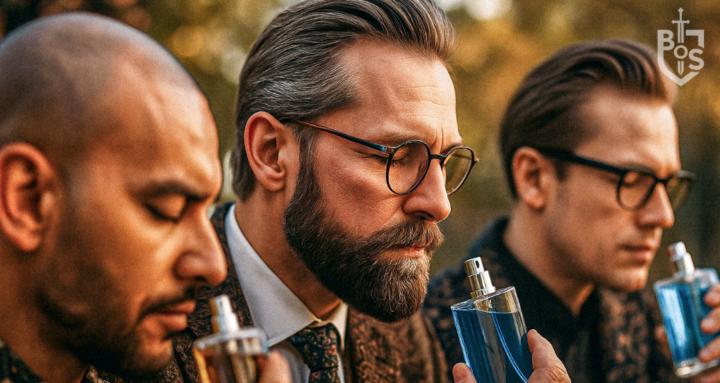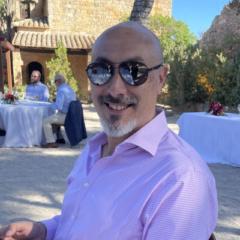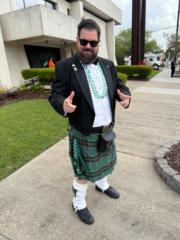Jul '24 (edited) • Weekly Challenges!
#NicheVsDesigner. A Case Study
I want to approach this differently and compare two fragrances: Carolina Herrera Bad Boy Parfum, and Gisada Ambassador Intense. Both of these fragrances are occupying similar spaces and roles but come from different directions to reach their goals. These are dark and spicy fragrances that are built for longevity, projection, and sex appeal.
Bad Boy Parfum is a flanker that surfaced out of a vanilla and amber dense designer. The original was aimed at the younger club demographic. It focuses on several key areas for designers. The perfume needs a reasonable price. It must have an arresting opening. It must project like a siren at all costs. It must grab the attention of as many people as possible without offending anyone. These are the ingredients that I see as vital for a designer fragrance of this kind.
What materialized in this instance was an attempt to push those traits as far as possible without tipping the whole thing into the abyss. The oil concentration increased, the base material ratio increased, the top notes had to become more daring. They had to do it with a designer budget. The consensus from the community was that it was a step too far. They choose to go Green with a vanilla. Greens are already a difficult and divisive area of perfumery, but in this instance they went all-in and created a Cannabis note. Bad boy, right? Well most people thought it was too pungent. This one will fade into obscurity until it gets discontinued, at which point people will realize what they missed.
So how do you go full Green and leather on a budget? Boatloads of patchouli. The synthetic-forward presentation is obvious to anyone with enough experience in fragrances. The lack of ingredient diversity hurt this perfume more than the marketing. Loud, linear, green, and dense without the benefits of great material made the opening smell like a good dose of artificial thc sitting in a leather jacket. It's what they were going for but it was either too early or too late to the scene to fit in. CH doubled down on tonka and saved the line for the mass audience. I happen to really enjoy this one, despite the flaws. It made a huge mistake because it went too niche.
And I love niche perfumery. It offers unique olfactory experiences. Niche is the final destination of all note hunters and perfectionists. Niche, that being creations of dedicated fragrance houses, must be unique to have intrinsic value in the fragrance market. Designers will produce a torrent of trend-following fragrances every year. To cut through the static you produce something with a different value. That could be artistry, exclusivity, intensity, or novelty. The risk of these ventures is compartmentalized into smaller production, distribution, and reserved marketing. These fragrances can afford to target a specific demographic, and that audience expects a higher return on desired qualities like novelty. Hence the double intentionality of the term, "niche." And one of these new houses is a Swiss company named Gisada.
Ambassador Intense is a bombastic concoction that followed on the heels of the original Ambassador. The fruity, tropical gourmand base was bolstered with heavy spices, woods, and aromatics to morph the sweet progenitor into a smooth and sexy beast that could square off with Sauvage Elixir. What we get is something between both points on the spectrum. A bright, fruity edge has been given to the rich elixir formula. It absolutely qualifies itself as a niche. It is potent, seductive, nuanced, and intoxicating.
All of this must come at an insane premium. Dior's premier release commands a price of over $150, how steep is the price of entry here? Well, about $110 retail. This is priced to murder a $100 Carolina Herrera flanker. It completely succeeds but the economics involved aren't so simple. In brief, designer does not equal "cheaper than niche" and this is a presumption that is quickly starting to fade in the current market. Where the designer edges out the niche is not always a return on value for the customer, but instead the producer. The mass appeal of this niche supercedes the designer as well. Anecdotally the niche is trouncing the designer for me. There is no data to reveal which company profited the most from these approaches but there is an awful lot of Bad Boy sitting in warehouses right now. The Gisadas are mostly sold out at retail.
In the present, I see the value proposition of niche and designers becoming inverted as fashion houses try to capitalize on a burgeoning luxury market. In that respect, the real value for the fragrance consumer comes with how willing they are to explore and research their options. Visibility is the biggest advantage designers currently have. That will also begin to erode as niche houses gain notoriety and access to alternative marketing sources.
23
7 comments

skool.com/bos
#1 Fragrance Community 🏆
Our mission is to help YOU leverage the power of scent to become the man you know yourself to be.
Powered by





